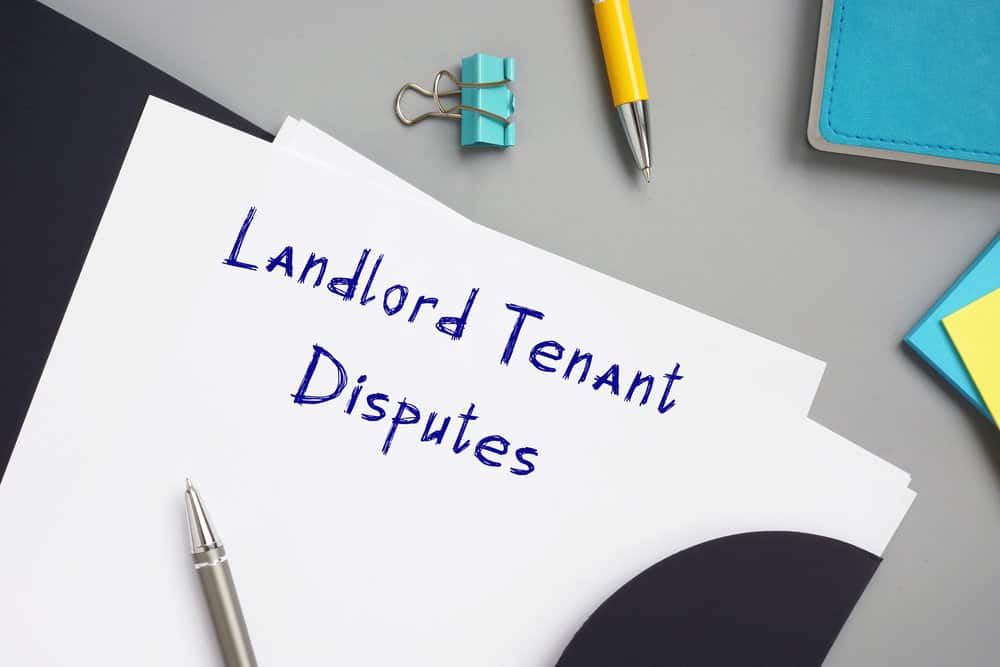Tenancy at will is a unique and flexible rental arrangement between a landlord and a tenant. Unlike other tenancy forms, it allows either party to terminate the agreement without notice or cause, providing both landlord and tenant with a degree of freedom not typically found in more rigid lease agreements.
In a tenancy at will, the tenant has the right to occupy and use the property indefinitely. This can be an attractive option for both parties, as it does not require the commitment of a fixed-term lease agreement. However, there are significant legal considerations and responsibilities that both landlords and tenants should be aware of to protect their interests and ensure a smooth rental experience.
As part of this unique arrangement, both parties must communicate their expectations and understand the rights and responsibilities of a tenancy at will. By familiarizing themselves with the specifics of this type of rental agreement, landlords and tenants can potentially create a mutually beneficial and hassle-free living situation.
Understanding Tenancy at Will
Tenancy at will is an agreement where the tenant occupies the property with the landlord’s permission, but there’s no fixed term or period. This arrangement can be terminated by either party at any time without prior notice, making it an often flexible and convenient choice for both parties involved.
Various factors set tenancy at will apart from other types of tenancies. To better understand the distinction, it’s essential to compare tenancy at will with other common tenancy types:
Comparison to Other Tenancy Types
| Tenancy Type | Definition | Key Characteristics |
|---|---|---|
| Tenancy at Will | A flexible agreement where either party can terminate without notice | No fixed term, easy termination, typically no written agreement |
| Tenancy-for-Years | A tenancy for a fixed period, typically specified in a lease agreement | Fixed term, clearly defined rules, and responsibilities, written lease required |
| Periodic Tenancy | An ongoing tenancy agreement that renews automatically for equal intervals | Automatic renewal and termination require proper notice, often monthly or yearly |
| Tenancy at Sufferance | Occurs when a tenant remains in possession of the property after the tenancy has ended without the landlord’s permission | Illegal occupation, tenant subject to eviction, no legal rights for the tenant |
Tenancy at will provide flexibility for landlords and tenants, allowing either party to end the tenancy without needing a fixed term or lengthy notice periods. This makes it an attractive option for those seeking short-term arrangements or those not wanting to be tied down by a fixed-term lease.
However, the same flexibility can also pose some challenges, as the lack of a written agreement in some cases may lead to misunderstandings and uncertainty for both parties. It’s essential for landlords and tenants to openly communicate their expectations and establish a mutual understanding to ensure a smooth and problem-free tenancy at-will experience.
Creating a Tenancy at Will
A tenancy at will is a unique arrangement between a landlord and tenant that allows either party to terminate the agreement at any time with proper notice. There are several ways to create a tenancy at will, including written, oral, and implied agreements.
Written Agreement
While not legally required, a written agreement can provide both parties with a clear understanding of their rights and responsibilities in a tenancy at will. This written document may outline conditions or requirements, such as rent amount, payment schedule, and maintenance responsibilities. Well-drafted written agreements can minimize potential disputes between landlords and tenants.
A valid written tenancy will typically include the following components:
- Names and contact information of the landlord and tenant
- Property address and description
- Rent amount and payment terms
- The notice period for termination
- Signatures of both parties
Oral Agreement
An oral agreement between a landlord and tenant can also establish a tenancy at will. However, relying solely on an oral agreement can lead to misunderstandings and make it challenging to resolve disputes. Lack of documentation may also make it difficult to prove the existence of a tenancy at will in court. It is advisable to have at least a basic written agreement to supplement any oral agreement.
Implied Agreement
Sometimes, a tenancy at will can be created through an implied agreement. This may occur when a tenant continues to occupy a property after the expiration of a fixed-term lease, and the landlord accepts rent payments without establishing a new lease. Both parties may tacitly understand that the tenancy has become a tenancy at will, even if it is not explicitly discussed.
However, determining whether a tenancy at will exists by implication can be uncertain. Therefore, it is generally better for landlords and tenants to communicate their intentions and, whenever possible, use a written or oral agreement to establish a tenancy at will.
Termination of Tenancy at Will
A tenancy at will can be terminated at any time by either the tenant or the landlord. There are several ways in which the termination process can be initiated and carried out, depending on factors like the notice provided, state laws, and eviction proceedings. This section discusses the different aspects of terminating a tenancy at will, including notice requirements, state law variations, eviction proceedings, and immediate notice cases.
Notice to Terminate
The most common method of terminating a tenancy at will is by providing notice by the tenant or the landlord. In most cases, a written notice indicating the intention to terminate the tenancy is required, and it should include a specific date for the termination to take effect.
The notice period can vary depending on the state and individual rental agreement, but a 30-day notice is generally considered sufficient. The notice should be delivered in person or by certified mail to ensure receipt.
State Law Variations
State laws concerning the termination of a tenancy at will can differ significantly. Some states have specific requirements for the notice period, while others might have additional rules about the termination process. Landlords and tenants must know their state’s relevant laws to ensure compliance.
For example, some states might require a longer notice period, while others might have special provisions for cases where the tenant or landlord is a military member. Tenants and landlords should consult an attorney or legal resources to understand their rights and responsibilities under their specific state laws.
Eviction Proceedings
If a tenant refuses to vacate the property after receiving a notice to terminate the tenancy at will, the landlord might need to initiate eviction proceedings. The eviction process varies by state, but typically, the landlord must file a complaint with the court, serve the tenant with a summons, and obtain a court order for eviction.
Eviction proceedings can take time, and landlords and tenants must follow the legal process to avoid further complications. During an eviction, neither party should engage in self-help measures, such as changing locks, shutting off utilities, or forcibly removing the tenant. Doing so can lead to legal consequences.
Immediate Notice Cases
In certain circumstances, a landlord might be able to terminate a tenancy at will without providing the standard notice. These cases usually involve significant violations by the tenant, such as engaging in illegal activities, causing significant property damage, or posing a threat to the health and safety of other residents.
In such cases, the landlord may issue an immediate notice to vacate, also known as a notice to quit. This document typically provides a shorter time frame for the tenant to leave the property, sometimes as little as 24 hours. Again, the specific requirements for immediate notice cases may vary by state, and it is crucial for all parties involved to understand and comply with their local laws during this process.
Rights and Responsibilities
Landlord Responsibilities
In a tenancy at will, landlords have specific responsibilities towards their tenants. They must provide a habitable living space that meets local and state health and safety regulations. This includes ensuring proper maintenance of structural integrity, plumbing, electrical systems, and heating.
Landlords must also address and promptly repair issues during the tenancy, such as leaks or pest infestations. Additionally, they must provide reasonable notice before entering the tenant’s living space for inspections, maintenance, or repairs.
Tenant Responsibilities
Tenants have their own set of responsibilities during a tenancy at will. They must pay rent as agreed, often on a month-to-month basis. Without a long-term lease, tenants should communicate openly with their landlords about their intentions to continue or terminate the tenancy.
Furthermore, tenants must follow all rules established by the landlord, which typically include restrictions on making alterations to the property, subletting, or engaging in specific activities that may disrupt others or cause damage to the property. Finally, tenants are responsible for keeping the rented premises clean and reporting necessary repairs to the landlord.
Protection and Discrimination Laws
Both landlords and tenants are protected by federal, state, and local laws in the context of a tenancy at will. One key piece of legislation is the Federal Fair Housing Act, which prohibits discrimination based on race, color, national origin, religion, sex, familial status, and disability.
This means landlords cannot refuse to rent to potential tenants or apply different rental terms based on these protected classes. Additionally, state and local laws may provide further protections against discrimination, including sexual orientation, marital status, or age as protected classes.
There are also specific protections for tenants, such as the right to a habitable living space, the right to privacy, and the ability to report violations to the appropriate authorities without retaliation from the landlord. These tenant rights and the Fair Housing Act help ensure a level playing field and fair treatment for all parties involved in a tenancy at will.
Advantages and Disadvantages of Tenancy at Will
Advantages for Tenant
A significant advantage to a tenancy at will is the flexibility it provides for the tenant. With no fixed-term contract, the tenant can vacate the property with minimal notice, often as short as a month. This can be particularly beneficial for individuals with uncertain plans or needing to relocate frequently.
Another benefit to the tenant in a tenancy-at-will arrangement is that they can potentially negotiate more favorable rental terms, such as lower monthly payments or the inclusion of utilities as part of the rent, to reflect the nature of the agreement.
Advantages for Landlord

The primary advantage for a landlord in a tenancy-at-will arrangement is the ease of terminating the tenancy if needed. A landlord can ask a tenant to leave with little notice, providing greater control over the property.
Landlords also can adjust the agreement terms more efficiently, such as increasing the rent or modifying the lease terms, providing flexibility in managing their property.
Disadvantages for Tenant
While flexibility can benefit tenants, the lack of a fixed-term contract may also be a disadvantage, resulting in reduced stability. There is always the risk that the landlord could ask the tenant to vacate the property on short notice. This can be particularly challenging for people with children or require a stable living situation.
Additionally, tenants may find it more challenging to negotiate favorable rental terms in a tenancy-at-will agreement, as landlords may be less willing to offer discounts or incentives when there is no long-term commitment from the tenant.
Disadvantages for Landlord
The most notable disadvantage for landlords in a tenancy-at-will agreement is the risk of frequent tenant turnover. As tenants can leave with little notice, landlords may experience vacancy periods, resulting in reduced rental income and increased costs of finding new tenants.
Another disadvantage is that landlords may find it more difficult to screen potential tenants thoroughly. The shorter notice periods and increased flexibility may attract individuals who are not as reliable or responsible as those who commit to a fixed-term lease.
Special Cases and Exceptions
In tenancy-at-will agreements, certain exceptional cases and exceptions warrant attention, including issues involving domestic violence and sexual assault, as well as holdover tenancy situations.
Domestic Violence and Sexual Assault
Victims of domestic violence or sexual assault have specific protections under the law. In many jurisdictions, a tenant experiencing domestic violence or sexual assault can terminate their tenancy at will without penalty by giving the landlord written notice of the situation coupled with a protective order or a report from a qualified professional.
Landlords must grapple with legal and ethical obligations when handling these sensitive situations. They cannot violate the tenant’s privacy by disclosing information about the abuse or alerting the perpetrator. Additionally, a landlord cannot evict or penalize a tenant solely due to their domestic violence or sexual assault.
Holdover Tenancy
A holdover tenancy, also referred to as tenancy-at-sufferance, is a situation where a tenant continues to reside on the property after the expiration of their agreement without the landlord’s explicit permission. Holdover tenants may be required to pay rent for the extended stay, but their legal rights differ significantly from those of the tenancy-at-will agreement.
During a holdover tenancy, the landlord has the right to:
- Request the holdover tenant to vacate the premises with proper notice.
- Accept rent payments, thus converting the holdover tenancy to a month-to-month arrangement.
- Charge double the rental rate under some local laws, depending on the duration of unauthorized occupancy.
Conversely, holdover tenants may lose their security deposit or be subject to legal action if they fail to vacate after receiving a notice.
Commercial vs. Residential Tenancy at Will
In the context of property tenure, tenancy at will describe a tenant occupying a rented property with the landlord’s consent but without a fixed-term agreement. This type of tenancy can apply to both commercial and residential properties. This section will discuss the differences between commercial and residential tenancy at will, including the variations in laws and regulations, scenarios for both types of tenancy, and how these situations may affect landlords and tenants alike.
Differences in Laws and Regulations
Distinct laws and regulations govern commercial and residential tenancies at will. While some aspects of the legal framework are similar, such as the requirement for mutual consent between landlord and tenant, there are notable differences. For example, commercial tenants are often subject to different legal protections than residential tenants due to the nature and purpose of renting the property.
Residential tenancy laws are designed to protect tenant rights and ensure a habitable living environment. On the other hand, commercial tenancy laws may include more specific provisions related to business operations in the rented space, such as signage, zoning, and permissible uses.
Commercial Tenancy Scenarios
Commercial tenancies at will commonly occur when a business needs temporary space is transitioning between lease arrangements or when both parties prefer the flexibility that comes with a tenancy at will. Examples include:
- A small business renting office space on a month-to-month basis.
- With the landlord’s consent, a retail tenant continues to occupy a storefront after their fixed-term lease has expired.
- An entrepreneur rents a workshop or industrial space for a short-term project without committing to a long-term lease.
Residential Tenancy Scenarios
A residential tenancy will typically arise when tenants and landlords desire greater flexibility in their renting arrangements. This type of tenancy may occur in the following scenarios:
- A tenant rents a room or a house short-term, such as for vacation or temporary work assignments.
- A landlord allows a tenant to continue renting past the end of their fixed-term lease without signing a new agreement.
- A tenant moves in with family or friends without signing a formal rental agreement.
Whether the tenancy at will is commercial or residential, tenants and landlords must be aware of their rights and responsibilities. Open communication, mutual consent, and adherence to applicable laws and regulations are vital in maintaining a successful tenancy-at-will arrangement.
Frequently Asked Questions

What is a tenancy at will?
A tenancy at will is a rental agreement with no fixed term, and either party (tenant or landlord) can terminate the agreement at any time with proper notice. This provides both parties flexibility regarding the duration of the tenancy.
What are the usual notice periods for tenancy at will?
Notice periods may vary depending on the jurisdiction but typically range from two weeks to 30 days. Both parties need to be aware of the applicable notice period in their area to avoid any confusion or misunderstandings.
What are the advantages of tenancy at will for tenants and landlords?
- Tenants: They have greater flexibility to move out without being locked into a long-term lease, making it easier to adapt to changes in personal or professional circumstances.
- Landlords: They can more easily manage their property, adapt to market changes, and remove problematic tenants with short notice.
How can a tenancy at will be terminated?
Either party can terminate a tenancy at will with proper notice. Common reasons for termination include changing personal circumstances, property sales, or violating lease terms. To avoid disputes, providing written notice when terminating the tenancy is essential.
How is a tenancy at will different from a fixed-term lease?
A fixed-term lease has a specified end date, and both parties are committed to the lease until that date unless there’s a mutual agreement to terminate the lease. A tenancy at will does not have a fixed end date and can be terminated at any time with proper notice by either party.



